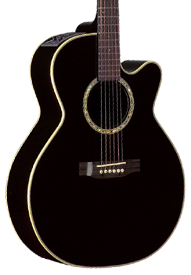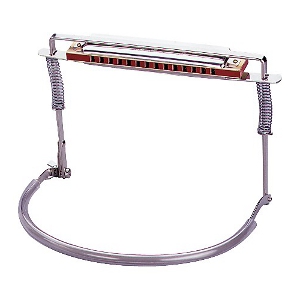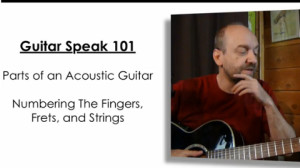
Guitar Exercise - Picking With the Right Hand Thumb
Getting the feel with the right hand thumb while learning the names of the strings and getting started on ear training all while playing a 12 bar blues progression.
Guitar Essentials
Lesson Info
Difficulty: Beginner
Lesson Length: 8:50
Instructor: George Goodman
Concepts: * Bars and Measures and Standard 4/4 Time
* 12 Bar Blues Progression
* Roots and Fifths
* Ear Training
* Palm Muting
Help File
Gear Used
Takamine EG541SC
I am playing my black tak in this one.
This is a Takamine G Series EG541SC bought in North Carolina when I was playing in a band called Double Take.
Specs:
Top - Solid Spruce
Back - Nato
Sides - Nato
Finger Board - Rosewood
Electronics - TK40
Finish - Gloss Black
Check out more Takamine G Series Guitars
Right Thumb Picking Exercise
In this lesson, we won't be needing a pick.
Hold the guitar in a comfortable position and place your right hand over the sound hole.
The thumb will be used to play the 4th, 5th, and 6th strings. Use your little finger to support your hand and give reference for the fingers.
We want to keep our hand movements small - no more than necessary. This keeps your hand in position for whatever comes next.
Rhythm Introduction and the Quarter Note
The exercise will use common or 4/4 time which is typical for a normal rock rhythm.
4 beats make up what is known as a bar or measure of music.
Each of those beats are called quarter notes. So in this exercise we will be playing straight quarter notes counted 1 2 3 4. Ok?
12 Bar Blues in A
A bar of music in common or 4/4 time has four beats with each quarter note lasting for 1 beat.
For a 12 Bar Blues, there are 12 bars or measures that repeat.
In this exercise, the thumb is going to be picking the strings 4, 5, and 6 to a 12 bar blues progression in the key of A.
Here is a representation of the 12 Bar Blues progression in the key of A with each bar separated with '|'.
A | A | A | A |
D | D | A | A |
E | D | A | E |
When playing the exercise, we will be playing the root note plus the fifth. For example, when playing A, we will alternate between A (the root) and E (the fifth). E is the fifth note in the key of A.
When playing D, we will alternate between D (the root) and A (the fifth).
When playing E, we will stick with the root note, E.
When playing each string, recall the letter name of the string being played. Even better, sing the name and pitch of the note being played.
Try palm muting after picking the note to give distinction between each note being played. Muting the strings after playing a note or chord allows the player to give definition and articulation to the music as required.
Wrap Up
This is a simple exercise in that it only uses the right hand thumb for playing the notes but it introduces a number of new concepts.
Rhythmic theory including common or 4/4 time, bars or measures and quarter notes are introduced.
The structure of a 12 Bar Blues is also practiced.
Ear training, playing techniques, and learning the note names of the strings is covered.
Roots and fifths are also touched upon. Don't worry if you're not understanding roots and fifths right now. It will all come clearer as we go through the exercises.
5 Pack Case of Hohner Special 20s
What do I like about the Special 20s?
Great Sound, Smooth Comb, Responsive to Bending - but not loose, Affordable. I play Special 20s more than any other model.
Hohner Harmonica Holder
The Hohner Harmonica Neck Holder fits harmonicas up to 7-1/2" long, has a nickel plated finish and fits any neck shape.
I have used a similar holder for over 25 years. This no-nonsense holder will work for you.
Martin Acoustic Guitar Strings
If it's been a while since you've changed your strings, you won't believe the difference in the sound. These are some excellent Martin strings. Need I say more? Totally affordable.












Leave a Reply